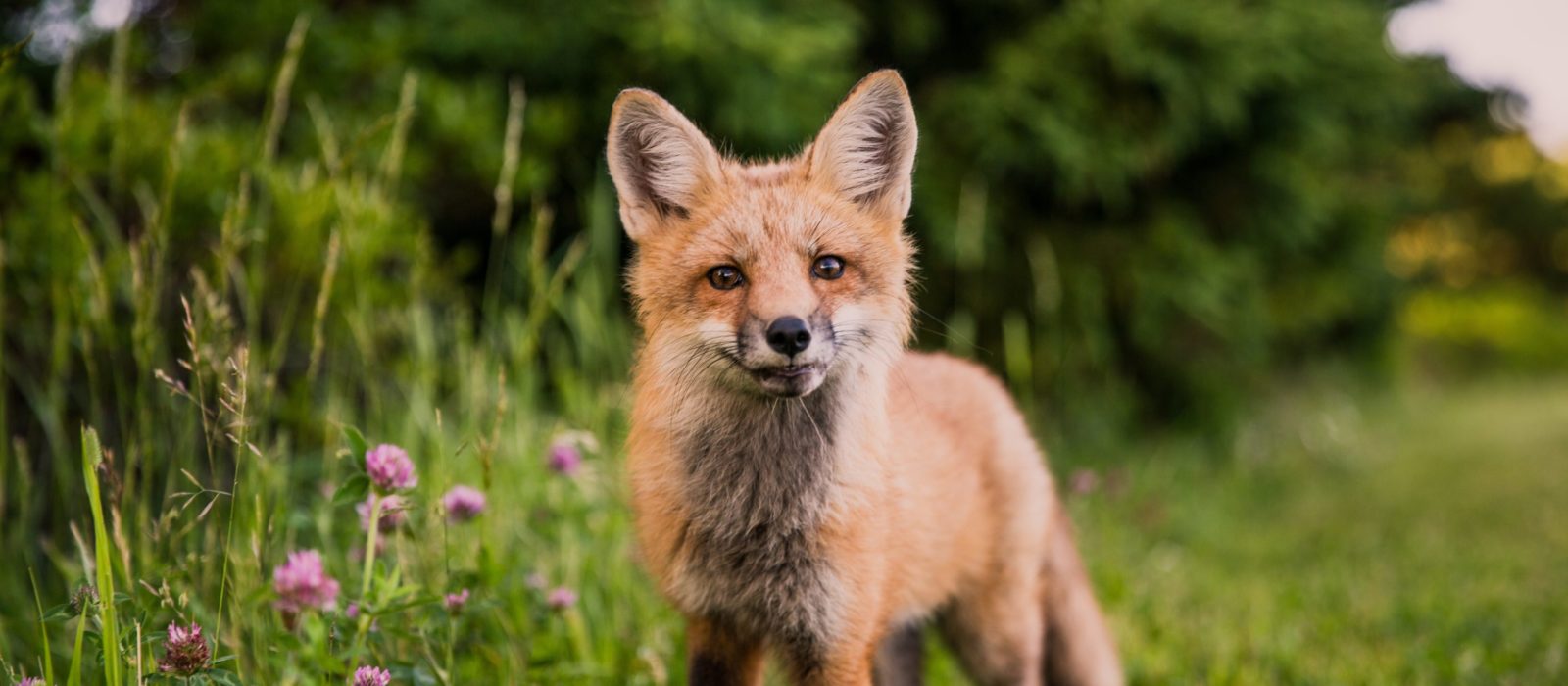
Fox Time
We are in the zone, totally caught up in the moment, and hot on the trail of a red fox. My tracking partners are fourth-graders, and they are full-in—following the fox’s trail on hands and knees as it slinks around the forest forts and fairy houses that dot their school woods.
With two inches of powdery snow on top of a skin of hard ice, the conditions couldn’t be better. Each track is a perfect imprint of four petite toes ending in tiny triangular claw imprints. The fox—usually an invisible visitor—is revealed.
We take our gloves off and touch the track, feeling each toeprint as if we could slip a little bit of fox into our hearts. We notice where the fox sat down to sniff a mouse hole, and then we find a treasure: the fox’s skunk-scented urine. This pungent territorial marking fills the winter air reminding us that we share the world with a wildness, even behind the elementary school in downtown Hancock.
For an hour, the line between wild and us grows thin. Snaking around hemlocks and pines, we walk in kinship with this fiery animal. I know we aren’t really foxes, but in this moment, we have slipped out of the everyday and into fox time.
What starts with the fox expands to the forest as we hear the scrabble of a winter wren climbing up a tree trunk and the way the crinkly brown beech leaves whisper in the wind. We notice how the air smells sharp with snow.
There is a mindfulness to our time—a deep breath filling each of us with woods, sunlight, snow. It brings to mind slow birding, slow eating, forest bathing—all practices that invite us to be present and let the power of our senses draw out a deep connection to the world around us.
It isn’t always like this. Sometimes there are no tracks to get lost in. Sometimes fourth graders need to move and have no patience for following the meandering trail of any animals other than themselves. And sometimes, I, as their leader, am distracted by my own ramblings and agenda. But more often than not, spending time tracing the footfalls of wild animals invites us to slow down and take notice.
Deep in each of us lives a tracker, a hunter, and a gather. It is our biological legacy, an ancient human hardwiring. None of us would be here today if our ancestors hadn’t been so skilled at finding and following the signposts that brought their next meal or signaled danger. Most of us no longer have to track for survival, but we still engage in this ancient experience, even if we don’t often recognize it as such. Think, for instance, about how we shop. When we search for a bargain or a specific color, we are keying into a sensory accounting, a way of deeply noticing.
Instead of turning this on inside a store, tune into it on your next walk. Let your eyes wander. Search the soft mud along the river’s edge for raccoon tracks or for the way the meadow grass bends like a ribbon where a deer grazed. Take your time, and listen for the chittering red squirrel against the backdrop of birdsong on an early spring morning. Stop to breathe in long and slow, filling your body with the scent of pine needles or the spicy aroma of sun-on-soil. When the lilacs are in bloom this spring, bury your face in the silky blossoms.
And if you can, let yourself walk in fox time. You will never regret it.
